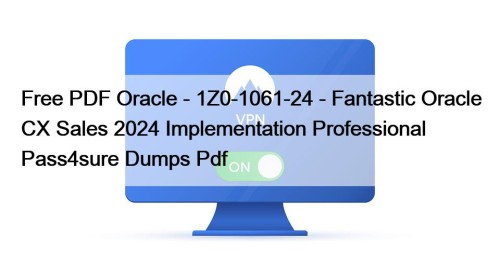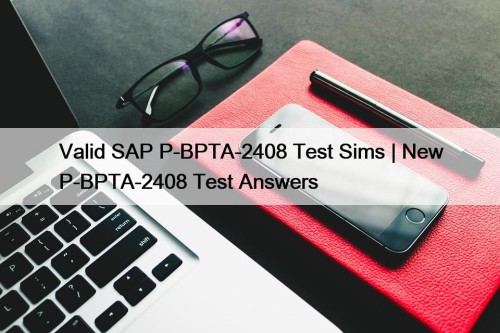Most Popular
 Free PDF Oracle - 1Z0-1061-24 - Fantastic Oracle CX Sales 2024 Implementation Professional Pass4sure Dumps Pdf
Free PDF Oracle - 1Z0-1061-24 - Fantastic Oracle CX Sales 2024 Implementation Professional Pass4sure Dumps Pdf
We provide up-to-date Oracle CX Sales 2024 Implementation Professional (1Z0-1061-24) ...
 Authoritative Oracle Valid Test 1z0-1110-25 Braindumps - 1z0-1110-25 Free Download
Authoritative Oracle Valid Test 1z0-1110-25 Braindumps - 1z0-1110-25 Free Download
With 1z0-1110-25 practice test questions you can not only streamline ...
 Valid SAP P-BPTA-2408 Test Sims | New P-BPTA-2408 Test Answers
Valid SAP P-BPTA-2408 Test Sims | New P-BPTA-2408 Test Answers
DOWNLOAD the newest Fast2test P-BPTA-2408 PDF dumps from Cloud Storage ...



Authoritative Oracle Valid Test 1z0-1110-25 Braindumps - 1z0-1110-25 Free Download

With 1z0-1110-25 practice test questions you can not only streamline your exam Oracle 1z0-1110-25 exam preparation process but also feel confident to pass the challenging 1z0-1110-25 Exam easily. One of the top features of Oracle 1z0-1110-25 valid dumps is their availability in different formats.
Oracle 1z0-1110-25 Exam Syllabus Topics:
| Topic | Details |
|---|---|
| Topic 1 |
|
| Topic 2 |
|
| Topic 3 |
|
| Topic 4 |
|
| Topic 5 |
|
>> Valid Test 1z0-1110-25 Braindumps <<
Free 1z0-1110-25 Exam, 1z0-1110-25 Latest Exam Duration
Oracle 1z0-1110-25 practice test software contains many Oracle 1z0-1110-25 practice exam designs just like the real Oracle Cloud Infrastructure 2025 Data Science Professional (1z0-1110-25) exam. These 1z0-1110-25 practice exams contain all the 1z0-1110-25 questions that clearly and completely elaborate on the difficulties and hurdles you will face in the final 1z0-1110-25 Exam. Oracle Cloud Infrastructure 2025 Data Science Professional (1z0-1110-25) practice test is customizable so that you can change the timings of each session. Prep4pass desktop Oracle 1z0-1110-25 practice test questions software is only compatible with windows and easy to use for everyone.
Oracle Cloud Infrastructure 2025 Data Science Professional Sample Questions (Q26-Q31):
NEW QUESTION # 26
You want to make your model more parsimonious to reduce the cost of collecting and processing data. You plan to do this by removing features that are highly correlated. You would like to create a heatmap that displays the correlation so that you can identify candidate features to remove. Which Accelerated Data Science (ADS) SDK method would be appropriate to display the correlation between Continuous and Categorical features?
- A. corr()
- B. correlation_ratio_plot()
- C. cramersv_plot()
- D. pearson_plot()
Answer: B
Explanation:
Detailed Answer in Step-by-Step Solution:
* Objective: Visualize correlation between continuous and categorical features using ADS SDK.
* Understand Correlation Types:
* Continuous vs. Continuous: Pearson correlation.
* Categorical vs. Categorical: Cramer's V.
* Continuous vs. Categorical: Correlation ratio (eta).
* Evaluate Options:
* A. corr(): General correlation (Pearson), not suited for mixed types-incorrect.
* B. correlation_ratio_plot(): Plots correlation ratio for continuous-categorical-correct.
* C. pearson_plot(): Not an ADS method; Pearson is continuous-only-incorrect.
* D. cramersv_plot(): Cramer's V for categorical-categorical-incorrect.
* Reasoning: Correlation ratio measures association between continuous and categorical variables-ideal for heatmap in this mixed scenario.
* Conclusion: B is correct.
OCI documentation states: "The correlation_ratio_plot() method (B) in ADS SDK generates a heatmap displaying the correlation ratio between continuous and categorical features, suitable for identifying highly correlated features for removal." corr() (A) defaults to Pearson, pearson_plot() (C) isn't real, and cramersv_plot() (D) is for categorical pairs-only B aligns with OCI's ADS capabilities for this use case.
Oracle Cloud Infrastructure ADS SDK Documentation, "Correlation Visualization Methods".
NEW QUESTION # 27
After you have created and opened a notebook session, you want to use the Accelerated Data Science (ADS) SDK to access your data and get started with exploratory data analysis. From which TWO places can you access the ADS SDK?
- A. Python Package Index (PyPI)
- B. Oracle Big Data Service
- C. Conda environment in OCI Data Science
- D. Oracle Autonomous Data Warehouse
- E. Oracle Machine Learning
Answer: A,C
Explanation:
Detailed Answer in Step-by-Step Solution:
* Objective: Locate sources for ADS SDK in OCI.
* Understand ADS SDK: A Python library for Data Science tasks (e.g., EDA).
* Evaluate Options:
* A: Big Data Service-Spark-focused, not ADS source.
* B: Machine Learning-Separate service, not ADS-related.
* C: Conda in OCI Data Science-Preinstalled ADS in notebook sessions.
* D: PyPI-Public source to install ADS (pip install oracle-ads).
* E: ADW-Database, not an SDK source.
* Reasoning: C (preinstalled) and D (installable) are practical access points.
* Conclusion: C and D are correct.
OCI documentation states: "The ADS SDK is available in OCI Data Science notebook sessions via preinstalled conda environments (C) and can be installed from PyPI (D) using pip install oracle-ads." Big Data (A), Machine Learning (B), and ADW (E) don't host ADS-only C and D apply.
Oracle Cloud Infrastructure Data Science Documentation, "ADS SDK Installation".
NEW QUESTION # 28
You have just received a new dataset from a colleague. You want to quickly find out summary information about the dataset, such as the types of features, the total number of observations, and distributions of the data.
Which Accelerated Data Science (ADS) SDK method from the ADSDataset class would you use?
- A. compute()
- B. show_corr()
- C. show_in_notebook()
- D. to_xgb()
Answer: C
Explanation:
Detailed Answer in Step-by-Step Solution:
* Objective: Get summary info from an ADSDataset object.
* Evaluate Options:
* A: Correlation matrix-Specific, not full summary.
* B: Converts to XGBoost-Not for summary.
* C: Executes computation-Not summary-focused.
* D: Displays summary (types, counts, dist)-correct.
* Reasoning: show_in_notebook() provides a comprehensive overview.
* Conclusion: D is correct.
OCI documentation states: "show_in_notebook() (D) from ADSDataset displays a summary of the dataset, including feature types, observation count, and distributions, in a notebook." A is partial, B and C are unrelated-only D meets the need per ADS SDK.
Oracle Cloud Infrastructure ADS SDK Documentation, "ADSDataset Methods".
NEW QUESTION # 29
Which OCI service provides a managed Kubernetes service for deploying, scaling, and managing containerized applications?
- A. Oracle Cloud Infrastructure Container Registry
- B. Oracle Cloud Infrastructure Container Engine for Kubernetes
- C. Oracle Cloud Infrastructure Streaming
- D. Oracle Cloud Infrastructure Load Balancing
Answer: B
Explanation:
Detailed Answer in Step-by-Step Solution:
* Objective: Identify OCI's managed Kubernetes service.
* Evaluate Options:
* A: Container Registry-Stores images, not Kubernetes.
* B: Load Balancing-Network service, not Kubernetes.
* C: Container Engine (OKE)-Managed Kubernetes-correct.
* D: Streaming-Data streaming, not containers.
* Reasoning: C is OCI's Kubernetes offering-OKE.
* Conclusion: C is correct.
OCI documentation states: "OCI Container Engine for Kubernetes (OKE) (C) provides a managed service to deploy, scale, and manage containerized applications using Kubernetes." A, B, and D serve other purposes- only C matches per OCI's container services.
Oracle Cloud Infrastructure OKE Documentation, "Overview".
NEW QUESTION # 30
You have received machine learning model training code, without clear information about the optimal shape to run the training. How would you proceed to identify the optimal compute shape for your model training that provides a balanced cost and processing time?
- A. Start with the strongest compute shape Jobs support and monitor the Job Run metrics and time required to complete the model training. Tune the model so that it utilizes as much compute resources as possible, even at an increased cost
- B. Start with a smaller shape and monitor the Job Run metrics and time required to complete the model training. If the compute shape is not fully utilized, tune the model parameters, and rerun the job. Repeat the process until the shape resources are fully utilized
- C. Start with a smaller shape and monitor the utilization metrics and time required to complete the model training. If the compute shape is fully utilized, change to compute that has more resources and rerun the job. Repeat the process until the processing time does not improve
- D. Start with a random compute shape and monitor the utilization metrics and time required to finish the model training. Perform model training optimizations and performance tests in advance to identify the right compute shape before running the model training as a job
Answer: C
Explanation:
Detailed Answer in Step-by-Step Solution:
* Objective: Optimize compute shape for cost and time.
* Evaluate Options:
* A: Tuning params-Focuses on model, not shape.
* B: Strongest shape-Costly, unbalanced.
* C: Scale up when utilized-Balances cost/time-correct.
* D: Random start-Unsystematic.
* Reasoning: C iteratively optimizes based on utilization.
* Conclusion: C is correct.
OCI documentation advises: "Start with a small shape, monitor utilization and time (C); scale up if fully utilized until performance stabilizes-optimizes cost and speed." A misfocuses, B overspends, D lacks method-only C aligns.
Oracle Cloud Infrastructure Data Science Documentation, "Compute Shape Optimization".
NEW QUESTION # 31
......
With our professional experts’ unremitting efforts on the reform of our 1z0-1110-25 guide materials, we can make sure that you can be focused and well-targeted in the shortest time when you are preparing a test, simplify complex and ambiguous contents. With the assistance of our 1z0-1110-25 Study Guide you will be more distinctive than your fellow workers. For all the above services of our 1z0-1110-25 practice engine can enable your study more time-saving and energy-saving.
Free 1z0-1110-25 Exam: https://www.prep4pass.com/1z0-1110-25_exam-braindumps.html
- 1z0-1110-25 Brain Dumps 📺 Test 1z0-1110-25 Dumps 🐋 Minimum 1z0-1110-25 Pass Score 🚨 Search for ▶ 1z0-1110-25 ◀ and download exam materials for free through ( www.examcollectionpass.com ) 📲1z0-1110-25 Reliable Exam Preparation
- Test 1z0-1110-25 Dumps 😻 1z0-1110-25 Reliable Exam Preparation 🛐 1z0-1110-25 Examcollection 🔔 Copy URL ➽ www.pdfvce.com 🢪 open and search for ➽ 1z0-1110-25 🢪 to download for free 👵1z0-1110-25 Examcollection
- 2025 Valid Test 1z0-1110-25 Braindumps - Oracle Cloud Infrastructure 2025 Data Science Professional Unparalleled Free Exam 🤍 Enter ▷ www.dumpsquestion.com ◁ and search for { 1z0-1110-25 } to download for free 🎑Unlimited 1z0-1110-25 Exam Practice
- New 1z0-1110-25 Exam Papers 🤬 1z0-1110-25 Brain Dumps 🏞 1z0-1110-25 Testing Center 🍐 Search for ⇛ 1z0-1110-25 ⇚ and download it for free on [ www.pdfvce.com ] website 🚒1z0-1110-25 Testing Center
- Exam 1z0-1110-25 Guide 🏝 1z0-1110-25 Review Guide 🏅 1z0-1110-25 Review Guide ☢ Download 「 1z0-1110-25 」 for free by simply searching on 「 www.getvalidtest.com 」 🍘1z0-1110-25 Brain Dumps
- 1z0-1110-25 Review Guide ♣ 1z0-1110-25 Reliable Exam Preparation 🐎 Reliable 1z0-1110-25 Exam Labs 🟣 Go to website ➥ www.pdfvce.com 🡄 open and search for [ 1z0-1110-25 ] to download for free 🍇1z0-1110-25 Latest Test Bootcamp
- 1z0-1110-25 Reliable Exam Preparation 🧁 Test 1z0-1110-25 Dumps 🏢 1z0-1110-25 Reliable Exam Preparation 💥 Search for 「 1z0-1110-25 」 and download it for free on ➤ www.free4dump.com ⮘ website 🔟1z0-1110-25 Examcollection
- Unlimited 1z0-1110-25 Exam Practice 🦈 Unlimited 1z0-1110-25 Exam Practice 📒 1z0-1110-25 Valid Exam Camp Pdf 👹 Search for ➡ 1z0-1110-25 ️⬅️ and easily obtain a free download on ➡ www.pdfvce.com ️⬅️ ↘Free 1z0-1110-25 Vce Dumps
- 2025 Oracle Efficient Valid Test 1z0-1110-25 Braindumps 🎤 Easily obtain “ 1z0-1110-25 ” for free download through ▛ www.exam4pdf.com ▟ 👙1z0-1110-25 New Braindumps Questions
- Oracle 1z0-1110-25 Exam Questions for Authentic Preparation 📥 Open website ✔ www.pdfvce.com ️✔️ and search for ▷ 1z0-1110-25 ◁ for free download 📆1z0-1110-25 Valid Exam Camp Pdf
- www.getvalidtest.com Oracle 1z0-1110-25 Exam Questions Preparation Material is Available 💙 Enter ⇛ www.getvalidtest.com ⇚ and search for ➠ 1z0-1110-25 🠰 to download for free 🕖New 1z0-1110-25 Exam Papers
- 1z0-1110-25 Exam Questions
- umsr.fgpzq.online lms.col1920.co.uk gm6699.com somaiacademy.com prominentlearning.xyz yuer.whatmiss.com nomal.org shikshami.in training.emecbd.com jimston766.blogunteer.com
Tags: Valid Test 1z0-1110-25 Braindumps, Free 1z0-1110-25 Exam, 1z0-1110-25 Latest Exam Duration, 1z0-1110-25 Free Test Questions, 1z0-1110-25 Certification Exam Cost